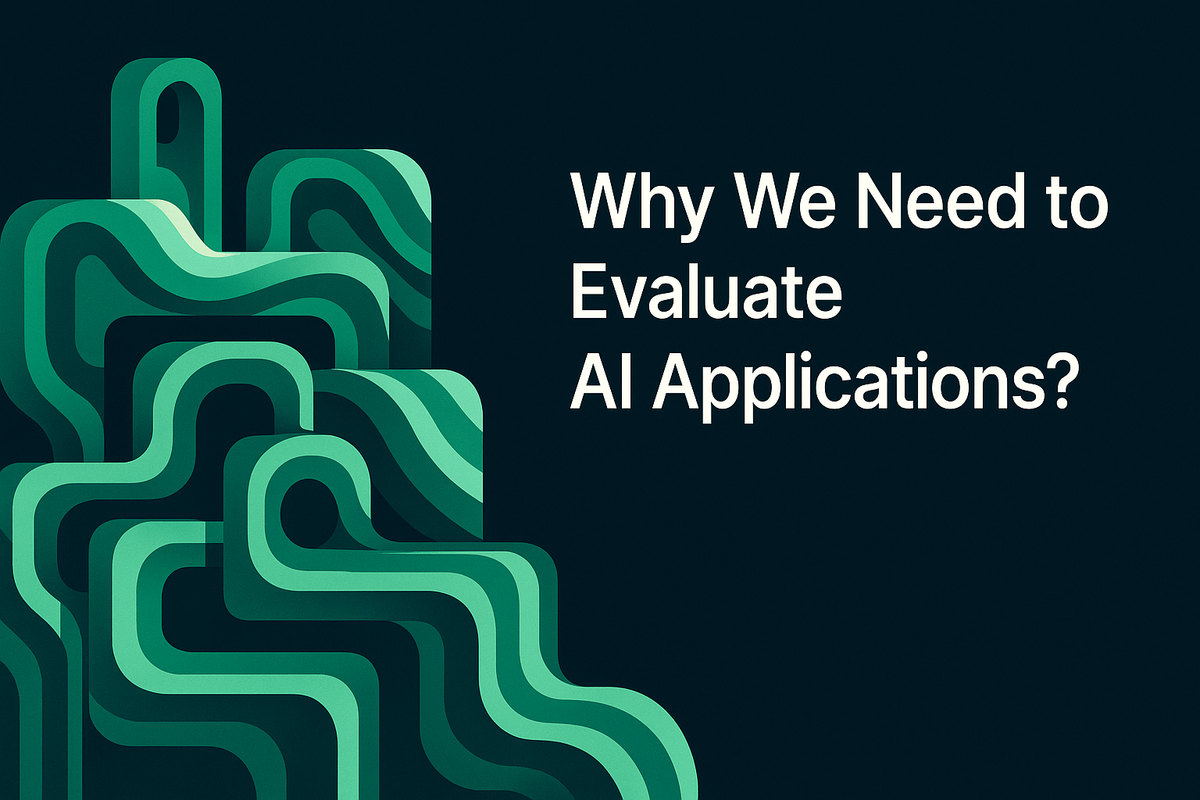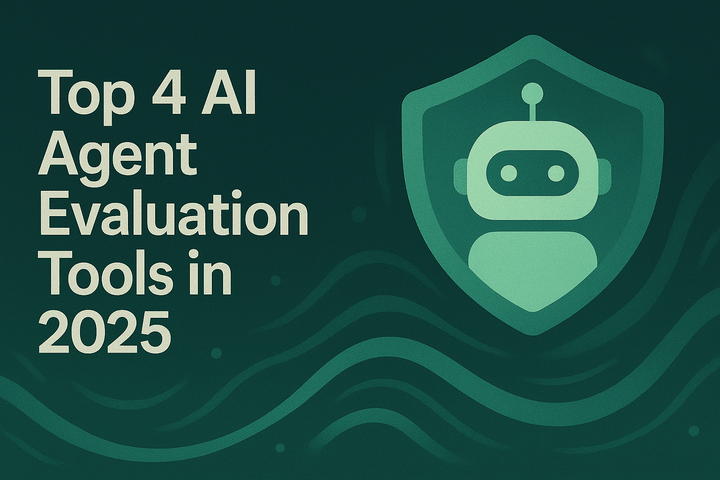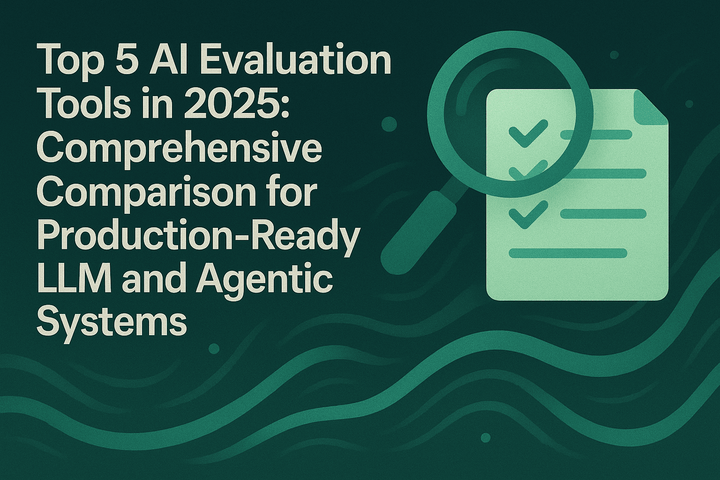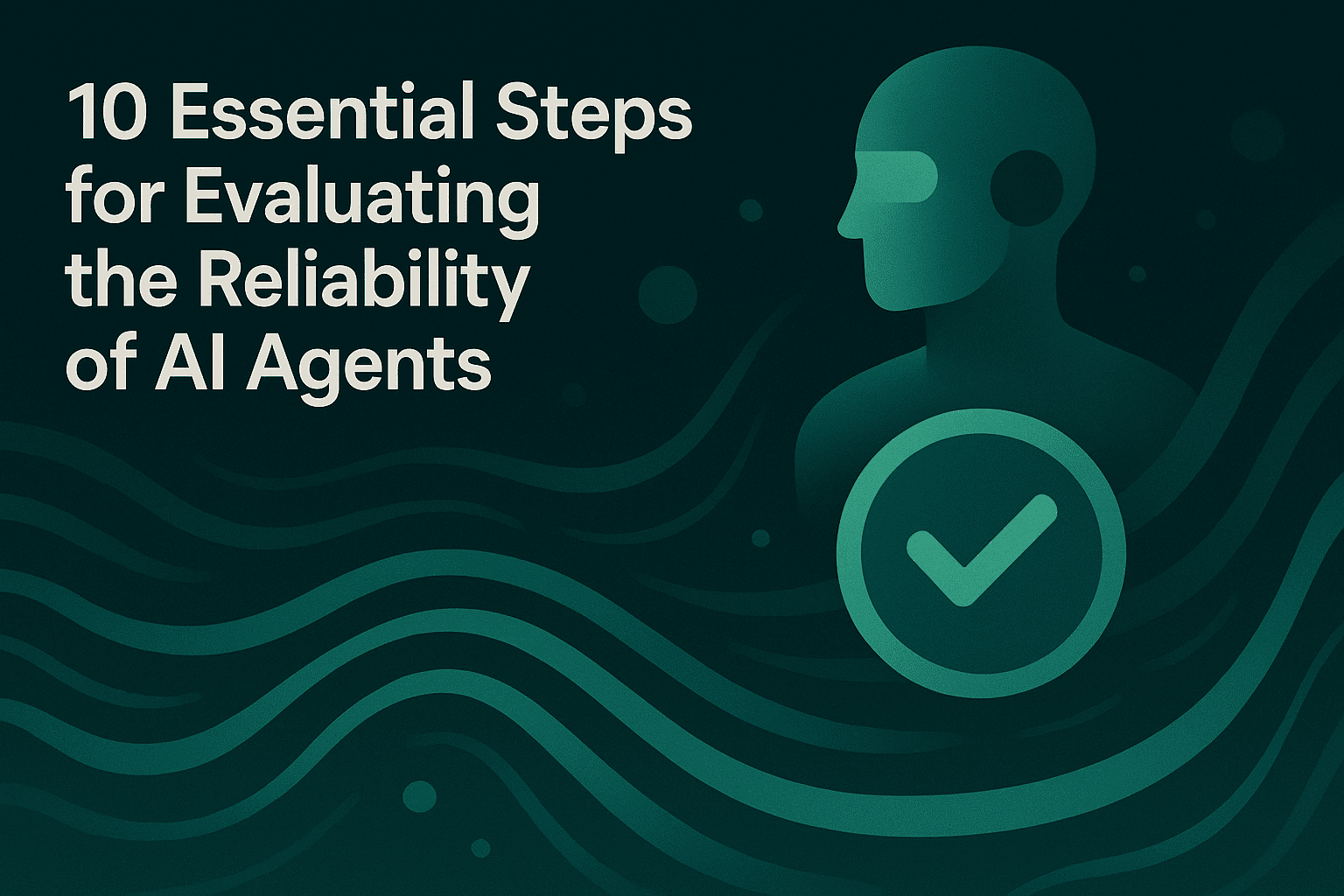Why We Need to Evaluate AI Applications?

The deployment of AI applications in production environments has accelerated dramatically, with organizations across industries racing to integrate large language models (LLMs), voice agents, and retrieval-augmented generation (RAG) systems into their workflows. However, this rapid adoption has exposed a critical challenge: without rigorous evaluation frameworks, AI applications can fail unpredictably, delivering inconsistent outputs, hallucinating information, or degrading in quality over time. As AI systems become more complex and autonomous, the need for comprehensive AI evaluation has shifted from optional best practice to operational necessity.
The Hidden Risks of Unevaluated AI Applications
AI applications differ fundamentally from traditional software systems. While conventional applications follow deterministic code paths, AI systems exhibit probabilistic behavior that can vary significantly across different inputs, contexts, and model versions. This non-deterministic nature introduces several risks that remain invisible without proper evaluation:
Quality degradation occurs when models produce outputs that are syntactically correct but semantically flawed. Research has shown that LLMs can confidently generate plausible-sounding but factually incorrect information, a phenomenon known as hallucination. Without systematic evaluation, these quality issues often surface only after user complaints or business impact.
Performance inconsistency manifests when AI applications behave differently across user segments, use cases, or temporal contexts. A voice agent might perform well during initial testing but fail when handling regional accents or domain-specific terminology. Studies on model robustness demonstrate that AI systems can exhibit significant performance variance across seemingly similar inputs.
Cost inefficiency emerges when organizations deploy oversized models or inefficient prompts without understanding their actual requirements. Without real-world data on latency, token usage, and quality tradeoffs, teams cannot make informed decisions about model selection or optimization strategies.
Regulatory compliance gaps pose increasing risks as AI governance frameworks mature globally. The EU AI Act and similar regulations require organizations to demonstrate that their AI systems meet specific quality, safety, and transparency standards, requirements impossible to satisfy without structured evaluation processes.
What AI Evaluation Actually Measures
Effective AI evaluation extends beyond simple accuracy metrics to encompass multiple dimensions of application quality. Understanding what to measure represents the first step toward building trustworthy AI systems.
Output Quality Metrics
The most fundamental evaluation dimension focuses on whether AI applications produce correct, relevant, and useful outputs. For different application types, quality manifests differently:
LLM-based applications require evaluation of factual accuracy, coherence, completeness, and alignment with instructions. Techniques like LLM-as-a-judge evaluators can assess these dimensions at scale, while human evaluation provides ground truth for edge cases and nuanced quality judgments.
RAG systems demand additional evaluation layers including retrieval relevance, faithfulness, etc. RAG evaluation frameworks must verify that retrieved context actually supports generated answers and that systems appropriately handle cases where sufficient information isn't available.
Voice agents introduce multimodal evaluation requirements encompassing speech recognition accuracy, response appropriateness, conversation flow management, and task completion rates. Voice agent evaluation must account for factors like handling interruptions, understanding context across turns, and managing conversation state.
Behavioral Consistency
AI applications must demonstrate consistent behavior across diverse scenarios. This includes evaluating performance across:
User personas and scenarios: Systems should maintain quality across different user types, conversation styles, and use case variations. Agent simulation enables teams to test applications against hundreds of realistic scenarios before production deployment.
Edge cases and failure modes: Comprehensive evaluation identifies how systems are able to respond to user inputs and identify edge cases and failure modes in both online and offline modes.
Temporal stability: Model updates, infrastructure changes, or data drift can silently degrade performance. Continuous evaluation through AI observability ensures that production quality remains stable over time.
Operational Metrics
AI applications in production must balance quality with practical constraints including latency, cost, and resource utilization. Evaluation frameworks should capture:
Response time and throughput: Understanding latency distributions across different query types and load conditions enables capacity planning and user experience optimization.
Token consumption and costs: Tracking token usage patterns reveals optimization opportunities through prompt refinement, model selection, or caching strategies. Semantic caching can reduce both latency and costs for repeated or similar queries.
Failure rates and error patterns: Monitoring system failures, API errors, and fallback invocations provides early warning of infrastructure issues or provider outages. Automatic fallbacks ensure reliability, but evaluation must verify that fallback behavior maintains quality standards.
Safety and Compliance
As AI applications handle sensitive data and make consequential decisions, evaluation must encompass safety dimensions:
Content safety: Systems must be evaluated for potential generation of harmful, biased, or inappropriate content across different contexts and user inputs.
Data privacy: Evaluation should verify that systems appropriately handle personally identifiable information and maintain proper data boundaries.
Compliance requirements: Industry-specific regulations may mandate particular evaluation standards. Healthcare AI applications, for instance, require validation against clinical accuracy standards and patient safety protocols.
The Evaluation Gap in Current AI Development Practices
Despite the clear need for comprehensive evaluation, most organizations struggle to implement effective evaluation workflows. Several factors contribute to this gap:
Evaluation tooling fragmentation forces teams to cobble together disparate solutions for different observability and evaluation needs. Serperate solutions for prompt testing, observability, and dataset management create operational overhead and prevent holistic visibility into AI quality.
Manual evaluation bottlenecks emerge when teams rely primarily on human review. While human evaluation provides essential ground truth, it cannot scale to the volume and velocity required for modern AI development cycles. Organizations need hybrid approaches combining automated evaluation with strategic human oversight.
Insufficient test coverage results when evaluation focuses narrowly on happy-path scenarios. Without systematic simulation across diverse user journeys and edge cases, critical failure modes remain undiscovered until production deployment.
Disconnect between pre-production and production evaluation creates blind spots when evaluation practices don't extend into live environments. Teams may rigorously test during development but lack mechanisms to verify that production behavior matches expectations or to detect emerging quality issues.
Building Comprehensive AI Evaluation Systems
Addressing these challenges requires an integrated approach spanning the entire AI application lifecycle, from initial experimentation through production deployment and continuous improvement.
Pre-Production Evaluation
Before deploying AI applications, teams need robust evaluation workflows that enable rapid iteration while maintaining quality standards:
Systematic prompt engineering through dedicated experimentation platforms allows teams to version prompts, compare outputs across model configurations, and quantify improvements. Maxim's Playground++ enables teams to organize prompts, test across multiple models, and deploy with confidence based on evaluation data.
Comprehensive dataset curation ensures evaluation coverage across relevant scenarios. Teams should build diverse test suites capturing realistic user inputs, edge cases, and known failure modes. Continuous dataset evolution using production logs and human feedback maintains evaluation relevance as applications mature.
Multi-dimensional evaluation runs assess applications across quality, safety, and operational metrics simultaneously. This comprehensive view enables informed tradeoff decisions when optimizing for specific objectives.
Simulation-Based Testing
Complex AI applications, particularly multi-agent systems and conversational AI, require evaluation beyond static input-output pairs. Simulation enables teams to test realistic user journeys and multi-turn interactions:
Scenario-based testing through AI-powered simulations allows teams to define realistic user personas and conversation flows, then automatically generate hundreds of test cases. This approach reveals issues that emerge only through extended interactions or specific conversation paths.
Conversational-level evaluation assesses whether agents successfully complete tasks, choose appropriate strategies, and recover from errors. Rather than evaluating individual responses in isolation, conversational evaluation considers the full trajectory of agent behavior.
Reproducible debugging enables teams to re-run simulations from specific failure points, understand root causes, and verify that fixes resolve issues without introducing regressions.
Production Observability and Continuous Evaluation
Evaluation cannot stop at deployment. Production environments introduce variability, scale, and real user behavior that testing cannot fully anticipate:
Real-time monitoring through distributed tracing captures complete context for every AI application invocation, including input, output, intermediate steps, and metadata. This visibility enables rapid debugging when issues arise and provides raw material for continuous evaluation.
Automated quality checks run evaluations against production traffic to detect quality drift, emerging failure patterns, or performance degradation. Configurable evaluation rules can trigger alerts when quality metrics fall below acceptable thresholds.
Feedback loops between production observability and development workflows ensure that insights from live systems inform future improvements. Production logs become evaluation datasets, real user feedback guides prompt refinement, and observed failure modes expand test coverage.
The Business Impact of Rigorous AI Evaluation
Organizations that implement comprehensive AI evaluation realize several significant benefits:
Accelerated development velocity: Teams move faster when they can quantify improvements, confidently deploy changes, and quickly identify regressions. Research indicates that robust evaluation and simulation capabilities enable teams to ship AI applications more than 5x faster.
Reduced production incidents: Catching quality issues before deployment prevents user-facing failures, support escalations, and brand damage. Systematic evaluation across diverse scenarios reveals edge cases that would otherwise surface as production bugs.
Optimized costs: Understanding the quality-cost tradeoff curve enables informed decisions about model selection, prompt engineering, and caching strategies. Teams can confidently choose smaller, faster models when evaluation data demonstrates sufficient quality.
Improved cross-functional collaboration: Collaborative evaluation platforms align engineering, product, and business stakeholders around common quality standards. Custom dashboards enable different teams to create insights relevant to their specific needs while maintaining consistency in underlying measurement.
Regulatory readiness: Documented evaluation processes, versioned test suites, and comprehensive quality metrics provide evidence of due diligence as AI governance requirements mature.
Implementing AI Evaluation: Practical Considerations
Organizations embarking on comprehensive AI evaluation should consider several practical factors:
Start with high-impact use cases: Rather than attempting to evaluate everything simultaneously, prioritize evaluation for AI applications with significant business impact, user exposure, or regulatory requirements.
Establish baseline metrics: Before optimization, establish baseline measurements across key quality and operational dimensions. This enables quantitative assessment of whether changes represent improvements.
Combine automated and human evaluation: Leverage automated evaluators for scale and consistency while using human evaluation for ground truth establishment, edge case analysis, and nuanced quality judgment.
Integrate evaluation into development workflows: Evaluation should not be a separate phase but an integrated part of the development process. Developer SDKs, CI/CD integration, and versioned evaluation configurations ensure evaluation happens consistently.
Invest in data quality: Evaluation quality depends fundamentally on test data quality. Continuously curate datasets, incorporate production examples, and enrich data with human feedback.
Moving Forward with AI Evaluation
The rapid evolution of AI capabilities demands equally sophisticated evaluation approaches. As AI applications grow more complex (incorporating multiple models, external tools, and autonomous decision-making) evaluation becomes both more challenging and more critical.
Organizations serious about deploying reliable AI applications need unified platforms that support the full evaluation lifecycle. Maxim AI provides an end-to-end solution spanning experimentation, simulation, evaluation, and observability, enabling teams to ship trustworthy AI applications faster and with greater confidence.
The question is no longer whether to evaluate AI applications, but how comprehensively and systematically to do so. Organizations that treat evaluation as a first-class concern will build more reliable systems, move faster, and establish competitive advantages in the AI-powered future.
Ready to implement comprehensive AI evaluation for your applications? Schedule a demo to see how Maxim can help your team measure and improve AI quality across the entire development lifecycle, or sign up today to start evaluating your AI applications with confidence.


